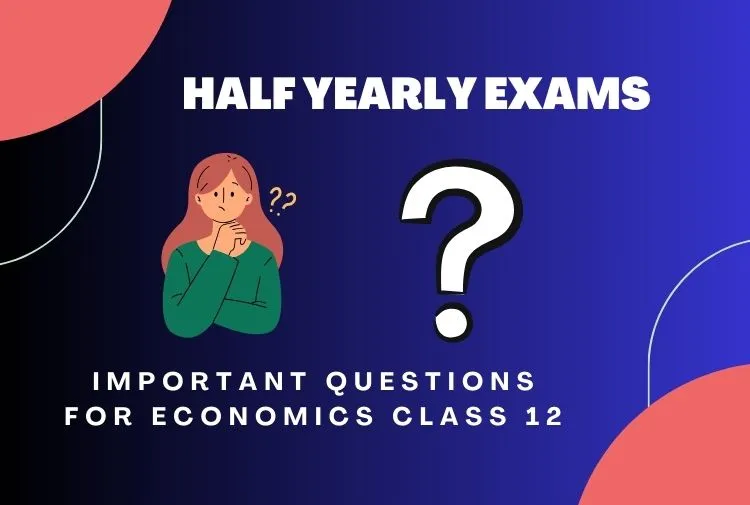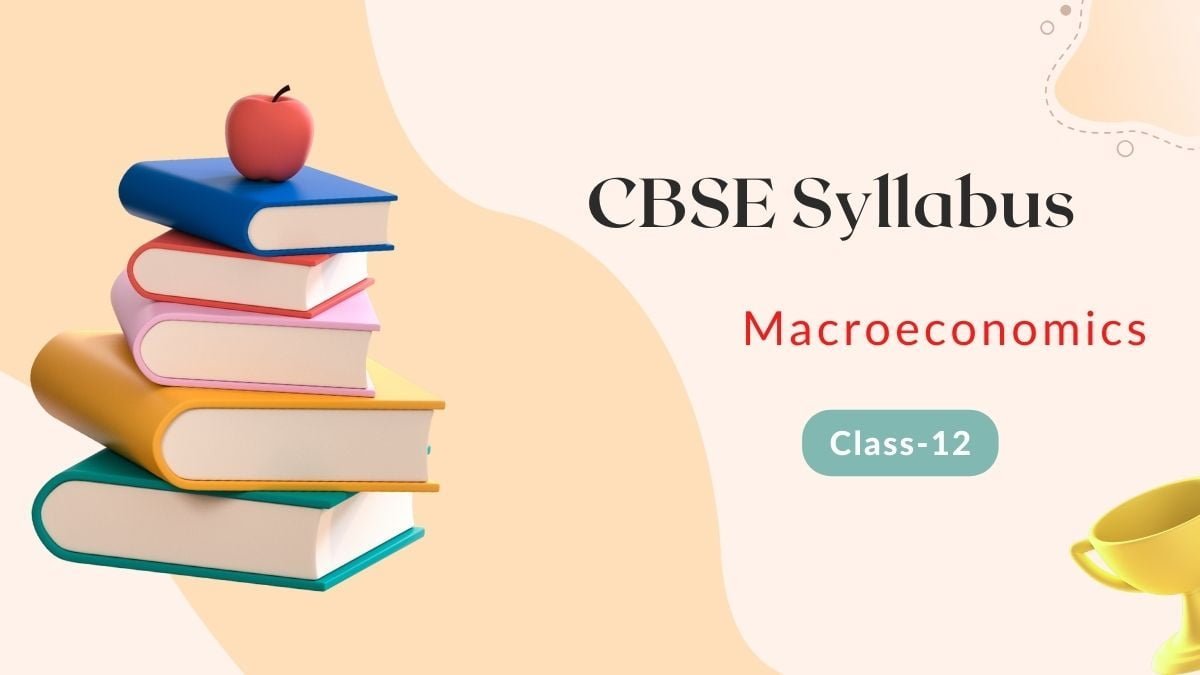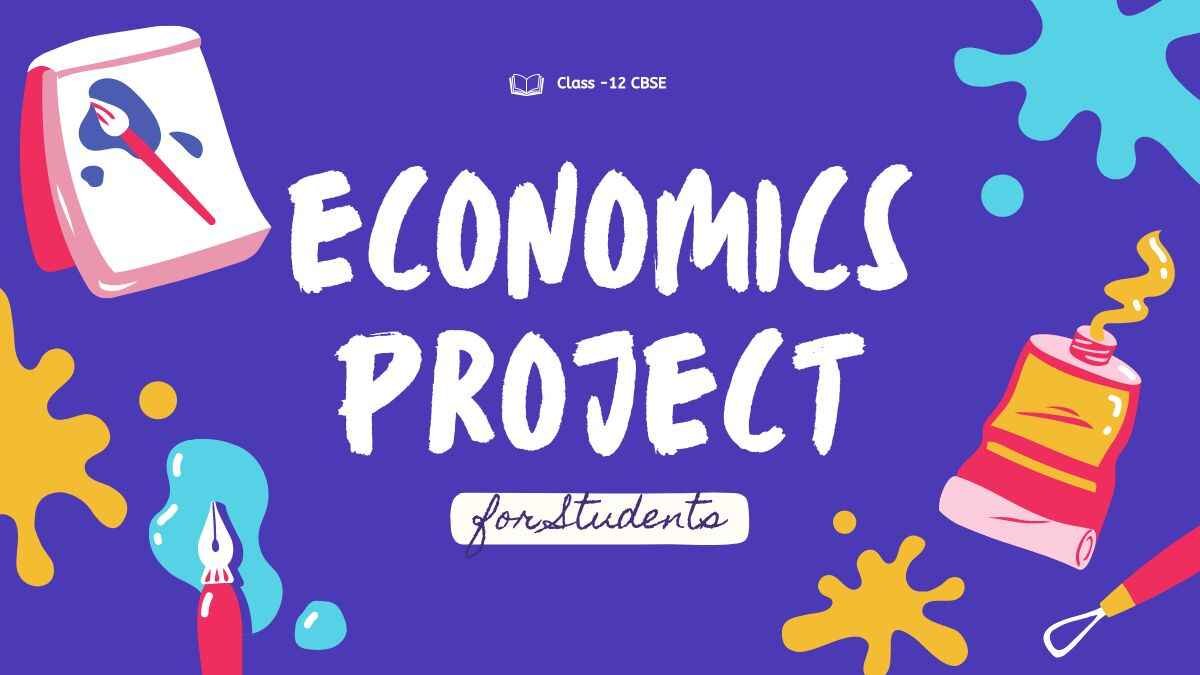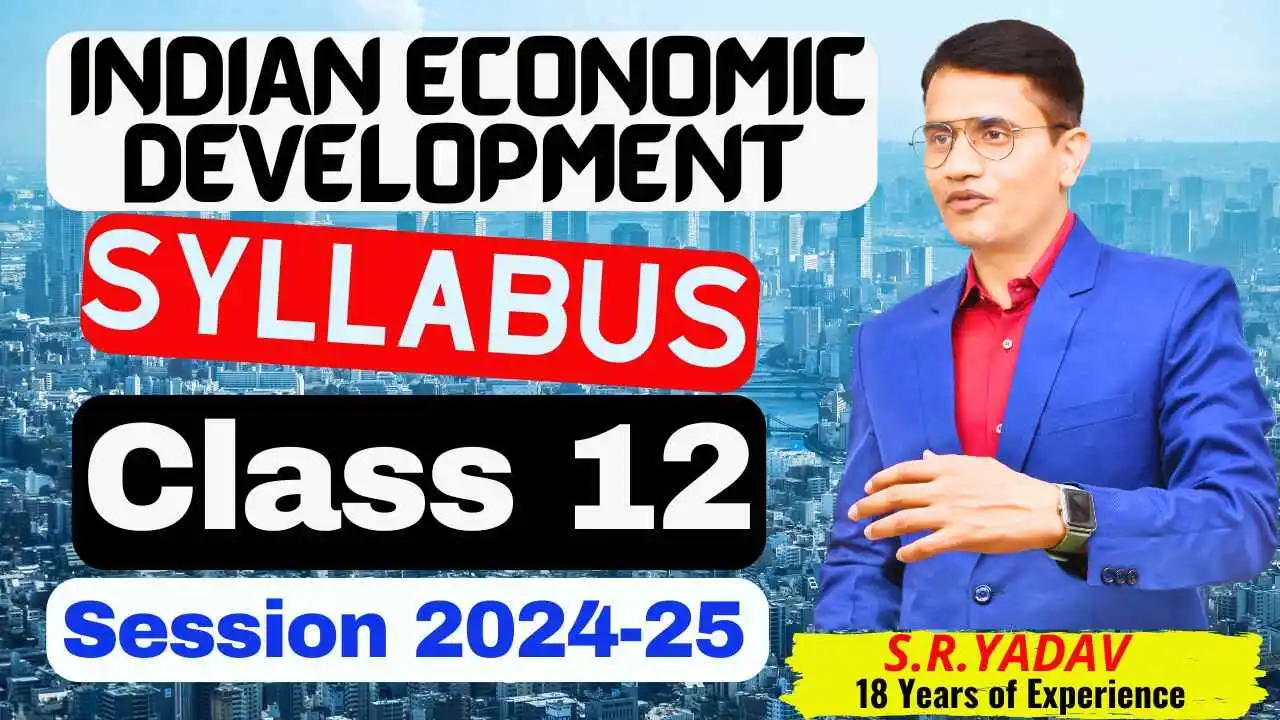Money and Banking Notes class 12
Welcome to my economics blog money and banking notes class 12. In this blog, you will study unit 2 money and banking today. According to the CBSE syllabus, this unit is of 6 marks in economics the board paper and the understanding of money and banking will be useful to you in real life. For that, I have brought you a one-stop solution in which you can study the entire unit with notes, CBSE question banks, NCERT solutions, and videos. So, you can get full marks in the money and banking unit. So for this, you must read the entire post.

Money and Banking Class 12 notes – PDF Download
Unit – II Money and Banking (6 marks)
CHAPTER-5 Money: Meaning and supply of money
Contents:-
- Barter System
- Meaning of the barter system
- Difficulties of barter system (drawback)
- Money:
- Evolution of money
- Definition of money
- Classification of money
- Functions of money
- Supply of money:
- Meaning of money supply
- Constituents of the money supply
- Item excluded from the money supply.
- Measures and Reserve bank of India’s approach to money supply
- Who supplies money?
Chapter 8 Commercial Banks and Central Bank
Contents:-
- Bank.
- Meaning of bank.
- Bank and financial institution.
- Commercial Bank.
- Meaning
- Credit creation by commercial Banks.
- Central Bank
- Meaning
- Functions of Central Bank.
- Instruments of monetary policy or credit control measures by RBI.
- Comparison between commercial and Central banks.
Economics Class 12 Important Related Links
Money and Banking Class 12 YouTube Video
Hello students, you can study Unit 2 Money and Banking Class 12 from YouTube videos. For this, I have given you the link to the YouTube playlist related to Money and Banking class 12 below, where I have uploaded all the videos chapter-wise, which you can watch. So you can study along with the notes and watch the videos. Apart from this, you can also solve CBSE question papers and NCERT questions. In this way, a one-stop solution for Economics class 12th is available to you on our website.
CBSE Board Question of Money and Banking Class 12 pdf – PDF Download
Hello student, to score well in the economics board exam, you will have to solve last year’s papers of CBSE for a of minimum 5 years. This will make your target study of money and banking units and you will also understand the language of the question most of the children face difficulty in the economics board paper because they do not understand the language of the question and even after knowing the answer, they give the wrong answer. So you will benefit from this.
Apart from this, if you want to solve the CBSE question bank of the last 15 years, I have given the link below, from which you can go to our GROWTH RATE Institute App and download it. I have uploaded the CBSE question bank of the last 15 years of the Money and Banking Class 12 unit on the App.
CBSE Board Paper Questions (2024)
SET-1,2 & 3
1. The Central Bank can reduce the Money Supply in the economy by __________the _________. (Fill up the blank with the correct alternative)
(a) increasing, bank rate. (b) decreasing, cash reserve ratio. (c) decreasing, bank rate. (d) buying, government securities.
Ans. (a) increasing, bank rate.
2. Identify the incorrect feature(s) of the Money Supply in an economy, from the following:
(i) It is measured during a period. (ii) it includes the stock of money held by the government of a nation.
(iii) it always represents the currency held with Central Bank of the Nation.
Alternatives:
(a) Only(i) ( b) (ii) and (iii) (c) (i) and (ii) (d) (i), (ii) and (iii)
Ans. (d) (i), (ii) and (iii)
3. Elaborate the ‘Bankers Bank and Supervisor’ function of the Reserve Bank of India.
CBSE Board Paper Questions (2023)
SET-1,2 & 3
1. Ms. Iqra Ansari, a teacher, was explaining in her class about various types of deposits with commercial banks. She quoted that-
“These deposits form a part of the M1 measure of money supply and are payable on demand by the commercial banks.” Identify the type of deposits she was explaining and choose the correct alternative:
(i) Demand Deposits (ii) Time Deposits (iii) Post Office Deposits
Alternatives.
(a) Only (i) (b) Only (ii) (c) (i) and (ii) (d) (i, (ii) and (iii)
Ans. (a) Only (i)
2. In the Indian economy, _____ are issued by the Reserve Bank of India and act as legal tender money.
(i) Coins of all denominations (ii) Currency notes of various denominations, except one rupee note (i) Demand deposits
Alternatives:
(a) Only(i) ( b) Only (ii) (c) Only (iii) (d) (i) and (ii)
Ans. ( b) Only (ii)
Or
______formulates the Monetary Policy in the economy. (Fill up the blank with the correct alternative)
(a) Commercial Banks (b ) International Monetary Fund. (c) Central Bank (d) Central Government
Ans. (c) Central Bank
3. “The process of credit creation by commercial banks comes to an end when the total of required reserves becomes equal to the initial deposits.” With the help of a numerical example, prove that the given statement is true.
CBSE Board Paper Questions (2022)
SET-1
1. Which of the following is not a function of the Reserve Bank of India?
(a) Issue of currency. (b) Banker to the public. (c) Banker to government. (d) Controller of money supply.
Ans. (b)
2. Identify which of the following statements is true:
(a) The Statutory Liquidity Ratio is fixed by the government. (b) The government of India issues all the coins and ₹ 1 currency notes.
(c) Supply of currency notes is determined under fiscal policy. (d) Demand deposits are not payable through cheques.
Ans. (b)
3. Read the following statements carefully – Assertion (A) and Reason (R). Choose the correct alternatives:
Assertion (A): The central bank provides loans to commercial banks in situations of financial distress.
Reason (R): The central bank can order the government to help the bank facing the financial crisis.
Alternatives:
- Both Assertion (A) and Reason (R) are true and Reason (R) is the correct explanation of Assertion (A).
- Both Assertion (A) and Reason (R) are true and Reason (R) is not the correct explanation of Assertion (A).
- Assertion (A) is true but Reason (R) is false.
- Assertion (A) is false but Reason (R) is true.
Ans. (c)
Question Nos. 4-9 are to be answered based on the following text and data:

4. The value of the money supply in the economy is ₹ __________crores.
(a) 1,30,78,148. (b) 1,93,99,596. (c) 47,78,148. (d) 47,31,426.
Ans. (d)
5. Money supply is a _________ variable, measured at a point in time.
(a) Stock. (b) Flow. (c) Both stock and flow. (d) Neither stock nor flow.
Ans. (a)
6. Demand deposits are____________.
(a) Chequable deposits. (b) Non-chequable deposits. (c) Fixed deposits. (d) Recurring deposits.
Ans. (a)
7. Suppose primary deposits are ₹2000 crores and the reserve deposit ratio is 10%. The money created by commercial banks would be ₹ __________crores in the economy.
(a) 10,000. (b) 20,000. (c) 2,000. (d) 1,000
Ans. (b)
8. Read the following statements carefully – Assertion (A) and Reason (R). Choose the correct alternatives:
Assertion (A): Money supply includes money held by all the financial institutions.
Reason (R): Money held by the government does not come into circulation.
Alternatives:
- Both Assertion (A) and Reason (R) are true and Reason (R) is the correct explanation of Assertion (A).
- Both Assertion (A) and Reason (R) are true and Reason (R) is not the correct explanation of Assertion (A).
- Assertion (A) is true but Reason (R) is false.
- Assertion (A) is false but Reason (R) is true.
Ans. (d)
9. _________releases data on money supply in India.
(a) Government of India. (b) Reserve Bank of India. (c) Commercial Banks. (d) State Bank of India.
Ans. (b)
SET-2
1. _________ is not related to the banking system.
(a) Bank rate. (b) Fiscal deficit. (c) Credit creation. (d) Cash reserve ratio.
Ans. (b)
2. Central Bank as _________, manages the public debt of the government.
(a) Custodian of Foreign Exchange. (b) Agent. (c) Financial Advisor. (d) Supervisor.
Ans. (b)
3. The process of credit creation by commercial banks comes to an end when _______. ( Fill up the blank with the correct alternatives.)
(a) Fresh deposits become zero. (b) The Reserve Ratio becomes zero. (c) The money multiplier becomes zero. (d) Total money reserves become equal to the initial deposit.
Ans. (d)
4. Statutory liquidity ratio implies that percentage of ________.
(a) total deposits of the commercial banks which must be kept in the current account, with the Reserve Bank of India.
(b) total deposits of the commercial banks which must be kept in the form of liquid assets, with the Reserve Bank of India.
(c) Net time and demand deposit liabilities of the commercial banks which must be kept in the form of cash, with the Reserve Bank of India.
(d) Net time and demand deposit liabilities of the commercial banks which must be kept with themselves in the form of liquid assets.
Ans. (d)
5. If the Legal Reserve Ratio is 20% and the initial deposit is ₹ 2000, then the value of the money multiplier and total money creation will be ______and ______.
(a) 5, 10, 000 (b) 4, 8,000 (c) 6, 2, 000 (d) 4, 10, 000
Ans. (a)
6. Which of the following statements does not support the function of RBI as supervisor to the commercial banks?
(a) Regulates the expansion, merger, acquisition, etc. of the bank. (b) Formulates all rules and regulations for commercial banks.
(c) Extend loans to the commercial bank. (d) Inspection of operations of banks.
Ans. (c)
7. Read the following statements carefully – Assertion (A) and Reason (R). Choose the correct alternatives:
Assertion (A): The Reserve Ratio and credit creation power of commercial banks are directly related.
Reason (R): Credit Creation is the product of the reciprocal of Reserve Ratio (RR) and Primary deposit.
Alternatives:
- Both Assertion (A) and Reason (R) are true and Reason (R) is the correct explanation of Assertion (A).
- Both Assertion (A) and Reason (R) are true and Reason (R) is not the correct explanation of Assertion (A).
- Assertion (A) is true but Reason (R) is false.
- Assertion (A) is false but Reason (R) is true.
Ans. (d)
8. Read the following statements carefully and choose the correct alternatives given below:
Statement 1 –All the coins are issued by the Finance Ministry in India.
Statement 2 – All the currency notes are issued by the Reserve Bank of India.
Alternatives:
- Both the statements are true.
- Both the statements are false.
- Statement 1 is true and Statement 2 is false
- Statement 2 is true and Statement 1 is false
Ans. (c)
SET- 3
1. In the context of commercial banks, which of the following alternatives is correct? (Choose the correct alternative)
(i) Deposits are liabilities of banks. (ii) Commercial banks are creators of money.
(iii) Commercial banks accept deposits of the general public. (iv) Accept deposits of the World Bank for Agriculture and Rural Development.
Identify the correct alternative from the following:
(a) (i) and (ii) (b) (ii) and (iii) (c) (i), (ii) and (iii) (d) (i) and (iv)
Ans. (c)
2. The total stock of money in circulation among the public __________is called as ‘money supply’. (Fill up the blank with the correct alternative)
(a) During a period. (b) During a calendar year. (c) During a fiscal year. (d) At a particular point in time.
Ans. (d)
3. From the following functions of the Central Bank, identify the odd one out:
(a) Currency authority. (b) Banker to the public (c) Bankers Bank. (d) Controller of Money Supply.
Ans. (b)
4. Which of the following is correct concerning the Ministry of Finance?
(a) It issues coins only. (b) It issues all types of currency notes. (c) It issues one rupee note and coins. (d) It issues only a rupee note.
Ans. (c)
5. Read the following statements carefully and choose the correct alternatives given below:
Statement 1 – The Reserve Bank of India keeps a certain percentage of deposits as a reserve to avoid ‘too much lending to the public’.
Statement 2 – The reserve deposit ratio acts as a deterrence to the amount of credit creation by commercial banks.
Alternatives:
- Both the statements are true.
- Both the statements are false.
- Statement 1 is true and Statement 2 is false
- Statement 2 is true and Statement 1 is false
Ans. (a)
6. Suppose money created by the banking system is ₹1000 and the primary deposit is ₹ 250. The respective values of deposit multiplier and reserve ratio would be_________ and __________.
(a) 4, 25% (b) 8, 12.5% (c) 4, 12.5% (d) 5, 20%
Ans. (a)
7. Read the following statements carefully – Assertion (A) and Reason (R). Choose the correct alternatives:
Assertion (A): Notes and Coins are the only source of money supply in the economy.
Reason (R): Demand deposits with commercial banks are also a component of the money supply.
Alternatives:
- Both Assertion (A) and Reason (R) are true and Reason (R) is the correct explanation of Assertion (A).
- Both Assertion (A) and Reason (R) are true and Reason (R) is not the correct explanation of Assertion (A).
- Assertion (A) is true but Reason (R) is false.
- Assertion (A) is false but Reason (R) is true.
Ans. (d)
8. The number of times the commercial banks can create total deposits with the help of reserves ratio and initial deposits is known as…………… (Fill up the blank with the correct alternative)
(a) Investment multiplier (b) Money Multiplier (c) Demonetisation (d) Remonetisation.
Ans. (b)
NCERT Solutions of Money and Banking Class 12 – FREE PDF Download
Hello students, you have received the notes on Money and Banking, CBSE question bank, and YouTube videos. Solving NCERT questions to score well in economics and the board exams is important. So, in this economics class 12 blog, I have uploaded the NCERT question & answers of Money and Banking Class 12 in PDF format, which you can download for free and benefit from.
Conclusion
Hello students, in this Economics class 12 blog, you have completed Money and Banking Class 12 on a different level. You did money and banking class 12 with the help of YouTube videos, The CBSE question bank, notes, and NCERT questions and answers in one place. In this way, this blog is our one-stop solution for Economics Class 12 students. So please give me your feedback on this and tell me how useful you found it. If you found it useful, then definitely you will share it so that more students can benefit from it. You can comment on it so that I can improve the future Economics class 12 blog
FAQs on Money and Banking Notes Class 12
Q.1 What is a barter system of exchange?
A. “Barter system of exchange is the system in which commodities are exchanged for commodities”.
Q. 2 What do you mean by the double coincidence of wants?
A. “Simultaneous fulfilment of mutual wants by buyers and sellers is known as double coincidence of wants”
Q. 3 What is meant by money?
A.“Money is defined as anything that is generally accepted as a medium of exchange, a unit of account, a standard of deferred payments and a store of value”.
Q. 4 Define money supply
A.“The stock of money held by the public at a point of time in an economy is referred to as the money supply”
Q. 5 defines high-powered money
A. It refers to the money produced by the RBI and the Government of India. It consists of notes and coins in the hands of the public, cash reserves of commercial banks, and other deposits of RBI.
Q.6 What is a credit multiplier?
A. It means commercial banks expand their deposits in multiples by giving loans and advances.
Q. 7 What do you mean by open market operations?
A. Open market operations refer to the sale and purchase of securities in the open market by the central bank.
Q. 8 What is the repo rate?
A. The repo rate is the rate of interest at which the central bank of the country gives loans to commercial banks against collateral for a short period.









